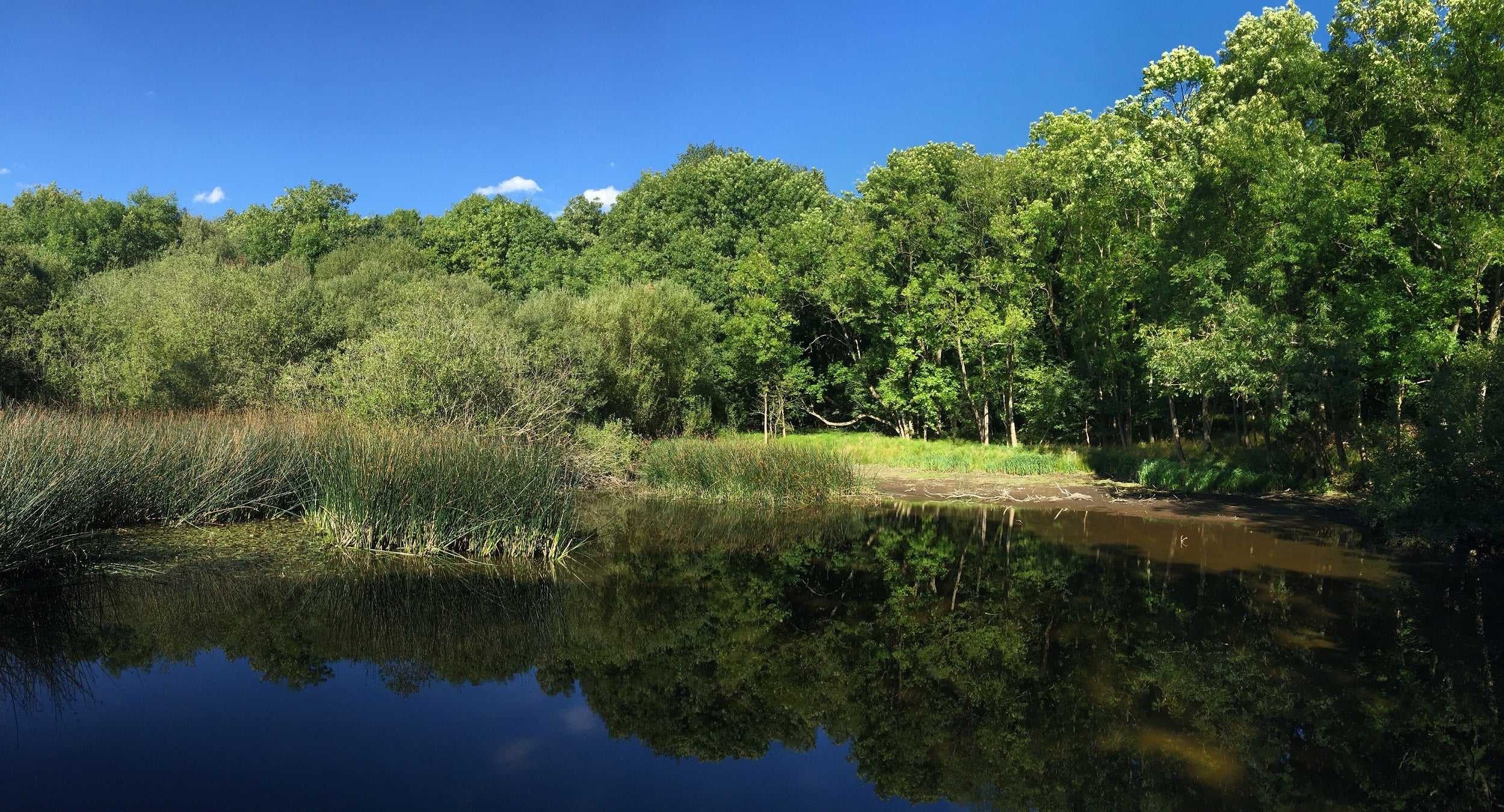Wetlands provide valuable ecosystem services, such as reducing flood peaks during wet periods, augmenting baseflows during dry periods and water purification, and they enhance biodiversity. There is increasing interest in using wetlands as ‘nature‐based solutions’ for flood mitigation and soil and water conservation. However, over time, there can be water-quality tradeoffs and wetlands can become sources of nutrients to downstream water bodies.

The Radbrook wetland‐pond system at Wytham, U.K.
A group of researchers, led by Water Institute member and professor in Waterloo’s Department of Geography and Environmental Management Helen Jarvie, examined nutrient cycling in a lowland wetland‐pond system in southern England over a 20‐year period. The team discovered that even a relatively pristine wetland can become a source of highly bioavailable phosphorus, nitrogen, and silicon during low‐flow periods of high ecological sensitivity.
“With no agricultural land, no dwellings or wastewater discharges within the catchment, the only sources of nutrients to the wetland-pond system are ‘background’ sources,” said Jarvie. “These include accumulated leaf litter and other organic matter, atmospheric deposition, and relatively low levels of soil erosion from the woodland catchment. This means that nutrients measured in the wetland-pond drainage outflow reflect the storage and recycling of accumulated ‘legacy’ nutrients, rather than contemporary agricultural or wastewater sources.”
Although the baseline nutrient concentrations in the outflow during winter and spring were typically very low, the 20-year water-quality record revealed periods of sustained phosphorus and nitrogen release. These phosphorus and nitrogen release events typically lasted between three and five months during summer and fall, but only in certain years. During these periods of nutrient release, phosphorus and nitrogen concentrations at the outflow rose to levels typical of water bodies impaired by agricultural or wastewater sources.
“We analyzed the long-term hydrochemical and meteorological data, and also deployed additional in-situ high-frequency water-quality sensors during a nutrient release event, to explore the climatic and biogeochemical drivers of phosphorus and nitrogen release,” said Jarvie.
During years with warm, dry summers and high solar insolation, the wetland-pond system released highly bioavailable soluble reactive phosphorus, ammonium and reactive silicon at concentrations capable of promoting eutrophication in downstream streams and rivers.
Jarvie and her team discovered that the switch from the wetland being a nutrient sink to a nutrient source was associated with climatic conditions which increased biomass delivery and production, and microbial mineralization and turnover of organic matter.
“Climate change scenarios predict hotter, drier summers and wetter winters in southern England, which are expected to increase nutrient and biomass delivery and turnover,” said Jarvie.” The changing climate has potential to ‘tip the balance’ towards greater nutrient release from wetlands, increasing downstream eutrophication risks.”
“This research highlights a need for wetland design and management to balance the many benefits for natural flood management and soil and water conservation, with potential longer-term water-quality tradeoffs, under a changing climate,” said Jarvie. “It also demonstrates the vital importance of long-term integrated monitoring and research in detecting the effects of environmental change on the biogeochemical functioning of our waterbodies and watersheds, for water-quality and water resources management.”
Learn more about Professor Jarvie’s research.